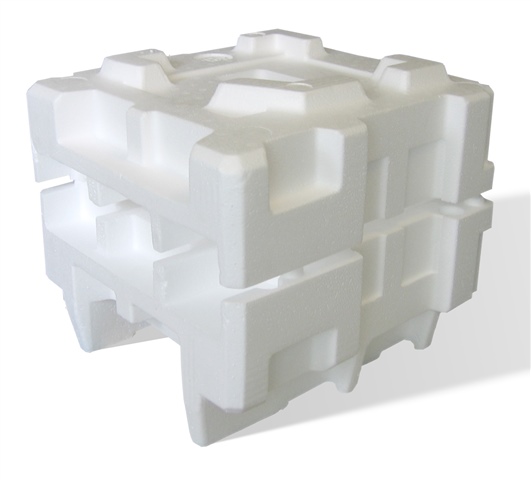Could self-healing road surfaces help fill in Britain's pothole crisis?
Scientists at King's College, London, Swansea University, and colleagues in Chile may have cracked the problem. They have developed a form of asphalt that heals fractures in the road surface in an hour.
The weight of traffic compresses the road surface, creating fissures, which allow water into the body of the surface. A cycle of freezing and thawing makes it worse. As this happens, the bitumen present in the asphalt will oxidise and harden, making it brittle.

To prevent this happening, the team is including 'spores,' - tiny plant-based materials saturated with recycled oil - into the surface structure. That oil leaches into the road surface under the weight of traffic, restoring the surface's suppleness and preventing the bitumen from breaking. It's hoped this will extend the lifetime of a road surface by 30%.
He explained, "This means they modify the bitumen and integrate into the material, though they are not directly exposed to the environment, as they remain inside the asphalt. In this sense, the spore acts as an additive that enhances the asphalt self-healing without being directly exposed to water. When you close the cracks, you prevent potholes forming in the future and extend the lifespan of the road."
One factor in the research that is becoming familiar has been the use of machine learning.
The team collaborated with Google Cloud to use machine learning to model how organic molecules move in bitumen and to test how the material responds to newly formed cracks.
Source: Zoe Holling on Unsplash
The RAC claim that each driver meets an average of 6 potholes per mile on English and Welsh council-maintained roads. The UK spends £143 million annually repairing potholes in the country's road network. The cost of repairing every pothole in England and Wales is roughly £16 billion.
Imagine a material as light as styrofoam and stronger than titanium
Researchers at the University of Toronto Faculty of Applied Science & Engineering have created a new nanomaterial using machine learning and 3D printing. This new material is as light as styrofoam and as strong as steel. This new material more than doubles the strength of current such materials. They have published their findings in Advanced Materials.
 Researchers say such a material could create lighter, stronger components in aircraft and other vehicles, reducing their weight and increasing fuel efficiency.
Researchers say such a material could create lighter, stronger components in aircraft and other vehicles, reducing their weight and increasing fuel efficiency.
Strength and hardness in materials can come at the cost of a tendency to shatter. Currently, nano-architectured materials built from tiny repeating blocks 100th the thickness of human hair have great strength. This same construction can create stress concentrations that lead them to break suddenly.
Dr. Peter Serles is one of the research leaders. He described a drawback with such materials, "Nano-architected materials combine high-performance shapes, like making a bridge out of triangles, at nanoscale sizes, which takes advantage of the 'smaller is stronger' effect, to achieve some of the highest strength-to-weight and stiffness-to-weight ratios, of any material.
As I thought about this challenge, I realised that it is a perfect problem for machine learning to tackle."
Dr Serles and Professor Tobin Filleter, the research leader, worked with Professor Seunghwa Ryu and PhD student Jinwook Yeo at the Korea Advanced Institute of Science & Technology (KAIST) in Daejeon, South Korea. This team used a multi-objective Bayesian optimisation machine learning algorithm to distribute stress and improve strength-to-weight ratios for the material.
Polystyrene packaging (aka 'Styrofoam'). Source: Wikimedia Commons
The team used a polymerisation 3D printer at the University of Toronto Centre for Research and Applications in Fluidic Technologies (CRAFT) to build prototypes for testing and validation. The result was an optimised nanolattice that can withstand the stress of 2.03 megapascals for every cubic metre per kilogram of its density. Five times greater than titanium.
Dr. Serles said he and his team were "Shocked by the improvements." The surprising aspect is that the algorithm didn't regurgitate the training data, but learned from it to produce something new.
The Human Genome stored for 14 billion years
The University of Southampton achieved a breakthrough data storage solution by creating a 5D memory crystal from quartz glass that could hold up to 360 terabytes of information for up to 14 billion years.
Developed by the University's Optoelectronics Research Centre (ORC), it uses five dimensions to store data. It uses ultra-short laser pulses to create nanostructured voids inside the material, making it both stable and durable. This method gives 3D coordinates within the structure. The refractive qualities of the glass allow two further dimensions: slow axis orientation and retardance.
The technology has several selling points. Among them are its toughness and durability. It can withstand temperatures of up to 1000°C, impact forces of up to ten tons per square centimetre, and exposure to cosmic radiation over long periods. What's more, the data quality does not degrade over time, and far in the future, long after humans disappear, perhaps another species will find it.
One recent practical application has been to place the entire human genome, everything that makes us what we are, into this 5D storage device. It uses elements such as hydrogen, oxygen, carbon, and nitrogen to do that. Alongside it are the DNA bases which make up the genetic code - adenine, cytosine, guanine, and thymine. Three billion base pairs organised into 23 pairs of chromosomes make up our DNA, found in the nucleus of each cell.
This 5D memory is now archived at the Memory of Mankind archive, based in a salt cave at Hallstatt in Austria. It's not 'sci-fi,' it's real. Source: Aakash Dhage on Unsplash
-----------------------------
What do you think?
What other inventions, developments, or announcements have caught your imagination during the last few weeks?
